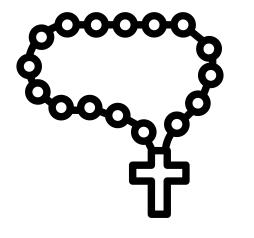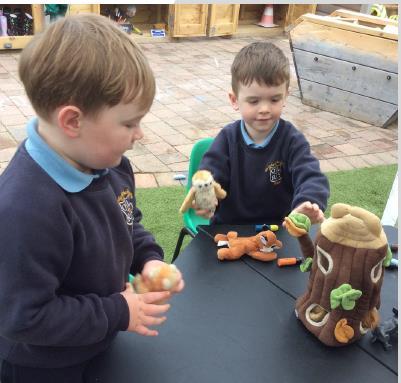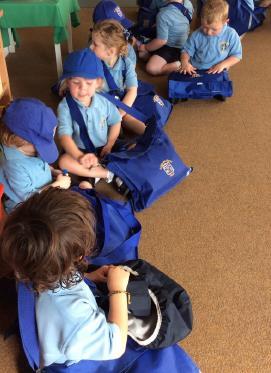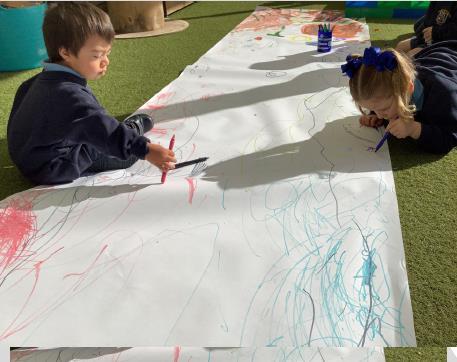
Nursery Curriculum NewsletterAutumn 2024



Nursery Curriculum NewsletterAutumn 2024

"Those who sow with tears will reap with songs of joy. Those who go out weeping carrying seed to sow, will return with songs of joy, carrying sheaves with them."
Psalm 126:5-6





Our themes for the Autumn term are 'Myself', 'Family' and 'Birthdays'. We will begin by talking about the importance of our names. We will read Isaiah 43: 1-2, which says that God knows us and loves us. Next, we will talk about our experiences of being welcomed into new situations, especially joining the Our Lady of the Rosary family. We will learn about how we welcome a new baby into God’s family through Baptism. Finally, we will share our memories about birthdays and how we celebrate them. This will help the children to understand the importance of Advent, when people get ready for the birthday of Jesus at Christmas.




This Autumn term, our RSHE lessons will focus on the theme: Handmade with Love. ln this series, we will look at the way we are created individually, by God, as part of His creation plan. We aim to provide the children with the language and understanding that, as God's children, each of us are special, created and loved by God. We will also speak about our families and our community and discuss the importance of looking after them.






The Autumn term is a really important time for the children to get to know each other and the adults who work with them. The children will be encouraged to initiate conversations, commenting on their environment and asking questions. As we focus on identity and families, the children will have many opportunities to talk about themselves and the people around them. It is a key moment for children to learn, or be reminded of the routines and expectations in Nursery. This will allow them to reinforce the skill of following simple instructions. We will use visuals and signs to help the children understand the language. We will be learning rhymes, songs and Makaton signs to develop children's receptive and spoken language. We will be introducing the children to Story Dough, an activity where we will work on language, rhyming, extending vocabulary and imagination.




In the Autumn term, our main goal is to settle the children into Nursery. It is important to ensure that they are happy, curious and confident learners. We will be embedding the behaviour expectations and routines, so that the children feel secure and comfortable, knowing what to expect when they come to Nursery each day. The children will have lots of time in small groups, where the adults can teach and model a range of social vocabulary, so that they can build relationships with new people.






It is important that the children have opportunities to develop their fine motor and gross motor skills. This term, we will build a foundation for fine motor skills by giving the children access to large mark making tools. We will develop key gross motor skills, enhancing the children's movement, balancing, riding and ball skills. The children will skip, hop, stand on one leg and hold a pose as we play a variety of balance games. ln 'Write Dance' sessions, the children will use large-muscle movements to wave flags and streamers, paint and make marks. We will also encourage independence with jumpers, coats and wellington boots, all of which require both fine and gross motor skills.




We begin this term with the focus texts, 'Ten little fingers, ten little toes' by Mem Fox and 'Guess How Much l Love You' by Sam McBratney. 'Ten little fingers, ten little toes' is a story about how babies from all around the world who discover that they have the same amount of toes and fingers. Through this story we will encourage the children to observe themselves and spot their own characteristics. 'Guess How Much I Love You' explores how we can express the love we share with our family members. As part of knowing all about me, we will focus on our families too. Through these stories and more, We will celebrate our differences and similarities and the diversity of families. Then we will study 'The Little Red Hen'. The children will learn to tell the story from memory using actions. The story will also lead our learning about Autumn and harvest. After half term, we will focus on 'The Leaf Thief' by Alice Hemming. This text will support the children’s understanding about the changes that happen in Autumn.






In Nursery, our phonics Phase One learning is planned carefully to develop essential listening and sound discrimination skills. These are the foundations for blending and segmenting words in Phase 2, when the children start Reception. This term, our focus will be learning how to listen. We will then start to recognise environmental sounds, tuning into the sounds around us. All of our activities will help the children to recognise and identify familiar and common sounds. To practice this, we will go on outdoor listening walks, aiming to develop their awareness of the sounds of nature, and around school to hear recognisable human sounds. The children will also explore how they can make new sounds in their environment. For example, they will use drumsticks and instruments to experiment with making sounds with everyday objects. Songs, instruments and poems will develop the children's perception of rhythm and rhyme.




This term, we will focus on developing key mathematical skills including cardinality, counting and subitising. The children will also get to explore patterns, as well as comparing size, mass and capacity. The cardinal value of a number refers to the quantity of things it represents. When children understand the cardinality of numbers, they know what the numbers mean in terms of knowing how many things they refer to. Counting is one way of establishing how many things are in a group, because the last number you say tells you how many there are. Children enjoy learning the sequence of counting numbers long before they understand the cardinal values of the numbers. Subitising is another way of recognising how many there are, without counting. All of these skills will be taught through hands on experiences, using objects or loose parts which will give context and understanding. The physical resources, will support concrete understanding.





This term, our focus for Understanding the World will be supporting the children to make sense of their own life- story and family history. The children will understand that they are special, and consider how they belong to their family and are part of the Nursery family. They will talk about significant events in their own life, for example, celebrations, holidays, birthdays and Christmas. As we look outward into our environment, the children will expand their knowledge of the signs of Autumn and changes in nature. They will be exposed to a range of vocabulary related to seasonal change.





This term, the children will be learning about Henry Moore, Barbara Hepworth and Jean Arp. These artists are famous for their abstract sculpture. The children will learn how to work with clay and use sculpting tools. This genre will provide the children with the freedom to explore the sensory experience of creating sculpture. It will allow them to communicate their ideas and creativity using malleable materials. ln the children's own learning time, we will provide them with the resources and inspiration they need to create autumnal art. They will have the opportunity to create art in response to Vivaldi's Autumn, make and use the colours of Autumn and use leaves or natural resources to make pictures.

